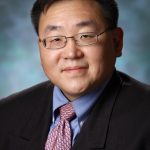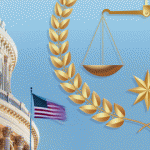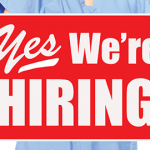State licensure of physicians was a natural outgrowth of the haphazard history of medical education in the U.S. Antebellum America was rife with physicians possessed of dubious qualifications, and there was no easy way for a prospective patient to differentiate a truly excellent physician from a physician who was, at best, ineffectual. Those days, however, are now safely behind us. The Oslerian model of medical education has been universal for some time; patients no longer risk encountering a Thomsonian or an herbalist at the local urgent care center. It is no longer reasonable to claim that a physician practicing in one state may not be competent to practice in another.
The current system of medical licensure impedes patient care. This impediment is particularly relevant in rheumatology, given the workforce shortages that plague our specialty. A nationwide medical license, along with judicious use of telemedicine, would dramatically increase patients’ access to subspecialty care. William Osler himself practiced in Canada, Pennsylvania, Maryland and England. His peripatetic career demonstrates that a physician’s skills are not limited by government borders.
State medical licensure was created to address a problem that no longer exists. We should now follow Osler’s example and remove artificial impediments to clinical practice.

Philip Seo, MD, MHS, is an associate professor of medicine at the Johns Hopkins University School of Medicine, Baltimore.
References
- Packard FR. William Osler in Philadelphia 1884–1889. Arch Intern Med (Chic). 1949;84(1):18–25.
- Sugg DK. Show-and-tell for doctors Making the rounds: In a tradition that began at Hopkins Hospital, doctors learn from patients and each other. The Baltimore Sun. 1995 Sep 22.
- He A. Thomsonian medicine: Herbalism, home remedies, and popular distrust of professional medical training in 19th century America. Bernard Becker Medical Library. 2022 Jan 12. https://tinyurl.com/3sz9btsx.
- History—Samuel Hahnemann. Bioregulatory Medicine Institute. https://www.biologicalmedicineinstitute.com/samuel-hahnemann.
- Sigerist HE. The history of medical licensure. JAMA. 1935;104(13):1057–1060.
- Appel TA. The Thomsonian movement, the regular profession, and the state in Antebellum Connecticut: A case study of the repeal of early medical licensing laws. J Hist Med Allied Sci. 2010 Apr;65(2):153–186.
- Devine S. Health care and the American medical profession, 1830–1880. The Journal of the Civil War Era. 2017 Jul 6. https://www.journalofthecivilwarera.org/2017/07/healthcare-american-medical-profession-1830-1880.
- Looking at the history of the AMA and medical education. American College of Allergy, Asthma & Immunology. 2017 Dec 18. https://college.acaai.org/looking-at-the-history-of-the-ama-and-medical-education.
- Duffy TP. The Flexner Report—100 years later. Yale J Biol Med. 2011 Sep;84(3):269–276.
- Barzansky B. Abraham Flexner and the era of medical education reform. Academic Medicine. 2010 Sep;85(9):S19–S25.
- ‘Father of modern medicine’: The Johns Hopkins School of Medicine, 1889–1905. National Library of Medicine. https://profiles.nlm.nih.gov/spotlight/gf/feature/father-of-modern-medicine-the-johns-hopkins-school-of-medicine-1889-1905.
- Redford G. AAMC renames prestigious Abraham Flexner award in light of racist and sexist writings. Association of American Medical Colleges. 2020 Nov 17. https://www.aamc.org/news-insights/aamc-renames-prestigious-abraham-flexner-award-light-racist-and-sexist-writings.
- Campbell KM, Corral I, Infante Linares JL, et al. Projected estimates of African American medical graduates of closed historically Black medical schools. JAMA Netw Open. 2020 Aug 20;3(8):e2015220.
- Irby DM, Cooke M, O’Brien BC. Calls for reform of medical education by the Carnegie Foundation for the Advancement of Teaching: 1910 and 2010. Acad Med. 2010;85:220–227.
- Davidfsmb. The forgotten chapter of the Flexner report. The Armchair Historian. 2019 May 2. https://armchairhistorian.blog/2019/05/02/the-forgotten-chapter-of-the-flexner-report.
- Michigan Medical Board License Service. MedLicense.com. https://tinyurl.com/yckbmuer.
- Medical license by endorsement. N.M. Code R. §16.10.2.10. Register. 2022 Aug 23;33(16). https://tinyurl.com/yc363w9y.
- Physician licensure application fees and timelines by state. Medicus Healthcare Solutions. 2022 Aug 10. https://www.medicushcs.com/physician-licensure-application-fees-and-timelines-by-state.
- Sawalha AH. Medical licensure: It is time to eliminate practice borders within the United States. Am J Med. 2020 May 19;133(10):1120–1121.
- U.S. state participation in the compact. Interstate Medical Licensure Compact. https://www.imlcc.org/#.



